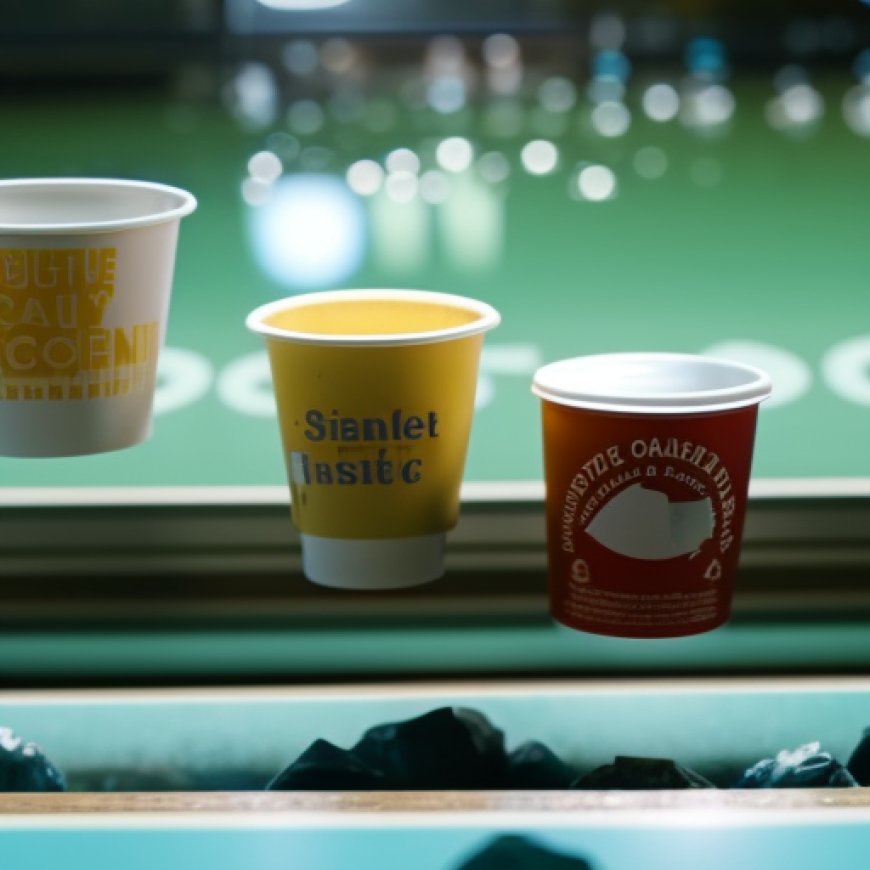Single-use paper cups are threat to aquatic life: Study
Single-use paper cups are threat to aquatic life: Study The New Indian Express


A Study Reveals the Toxicity of Single-Use Paper Cups to Aquatic Midges

Express News Service
Introduction
A recent study conducted by researchers at the University of Gothenburg has brought attention to an alarming discovery regarding the toxicity of single-use takeaway cups made of paper. The study, titled ‘Single-use takeaway cups of paper are as toxic to aquatic midge larvae as plastic cups’, was published in the esteemed journal Environmental Pollution, shedding light on the potential harm that substances found in paper cups can inflict on delicate aquatic creatures, particularly midge larvae.
The Environmental Impact of Paper Cups
Traditionally, paper cups have been considered a more environmentally friendly alternative to their plastic counterparts. However, this study reveals a hidden danger. The research found that the substances present in paper cups, such as dyes, coatings, and other chemicals, can have detrimental effects on aquatic midge larvae, which play a vital role in aquatic ecosystems. In the study, the researchers’ specimen included Chironomous riparius, a midge larva that is considered to be a crucial part of the aquatic food chain, serving as a food source for various organisms.
Experimental Findings
The researchers left the paper and plastic cups in wet mud and water with the larvae for four weeks. The findings revealed that the plastic and paper cups had detrimental effects on the midge larvae within one week of settling the sample. The longer the sample was kept, the worse the effect became. The growth rate of the creatures was comparatively slow, and some even had abnormal body parts.
Implications and Recommendations
The study concluded that it is not enough to simply replace plastic cups with paper-based products. Instead, there is a need to reduce consumption and use of single-use products overall. This aligns with the Sustainable Development Goals (SDGs), particularly Goal 12: Responsible Consumption and Production, which aims to ensure sustainable consumption patterns and reduce waste generation.
The Role of Bioplastics
The researchers discovered that paper used in food packaging is coated with bioplastics like polylactide (PLA) to resist water and fats. However, the PLA does not break down effectively in the environment, especially in water. This highlights the importance of finding sustainable alternatives to single-use packaging materials that do not pose a threat to aquatic life.
SDGs, Targets, and Indicators
-
SDG 14: Life Below Water
- Target 14.1: By 2025, prevent and significantly reduce marine pollution of all kinds, in particular from land-based activities, including plastic debris and nutrient pollution.
- Indicator: Presence of harmful substances in aquatic ecosystems.
-
SDG 12: Responsible Consumption and Production
- Target 12.5: By 2030, substantially reduce waste generation through prevention, reduction, recycling, and reuse.
- Indicator: Reduction in the use of single-use products.
Analysis
The article highlights the potential harm that substances found in paper cups can inflict on aquatic midge larvae. This issue is connected to SDG 14: Life Below Water, which aims to prevent and significantly reduce marine pollution, including plastic debris. The presence of harmful substances in aquatic ecosystems, as mentioned in the article, can be considered an indicator to measure progress towards achieving this target.
The article also emphasizes the need to reduce consumption and use of single-use products overall. This aligns with SDG 12: Responsible Consumption and Production, which aims to substantially reduce waste generation. The reduction in the use of single-use products, as mentioned in the article, can be used as an indicator to measure progress towards achieving this target.
Table: SDGs, Targets, and Indicators
| SDGs | Targets | Indicators |
|---|---|---|
| SDG 14: Life Below Water | Target 14.1: By 2025, prevent and significantly reduce marine pollution of all kinds, in particular from land-based activities, including plastic debris and nutrient pollution. | Presence of harmful substances in aquatic ecosystems. |
| SDG 12: Responsible Consumption and Production | Target 12.5: By 2030, substantially reduce waste generation through prevention, reduction, recycling, and reuse. | Reduction in the use of single-use products. |
Behold! This splendid article springs forth from the wellspring of knowledge, shaped by a wondrous proprietary AI technology that delved into a vast ocean of data, illuminating the path towards the Sustainable Development Goals. Remember that all rights are reserved by SDG Investors LLC, empowering us to champion progress together.
Source: newindianexpress.com

Join us, as fellow seekers of change, on a transformative journey at https://sdgtalks.ai/welcome, where you can become a member and actively contribute to shaping a brighter future.







